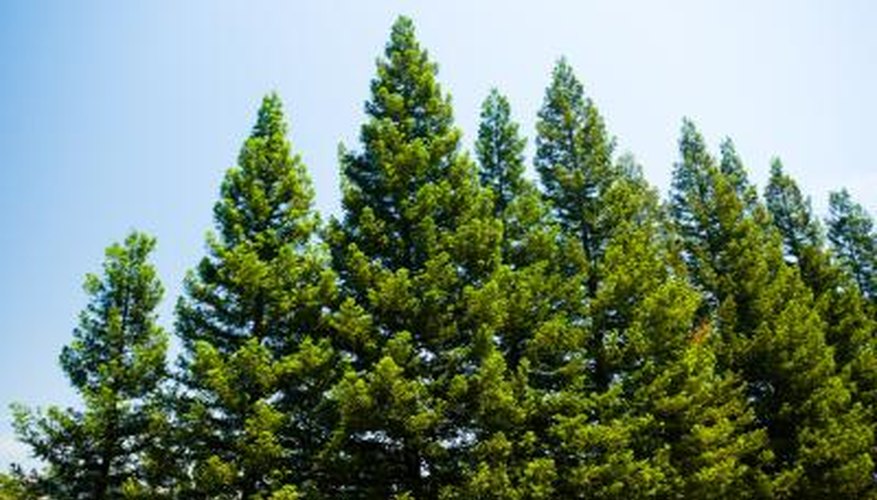There are several types of pine trees that grow in the United States. Pine trees are coniferous and have long, thin, needle-like leaves. These many needles make the tree dense, providing shade, protection from wind and privacy from neighbours. Whether the pine tree is planted for decorative or protective purposes, there are several things that can interfere with the tree and cause it to die. Determining what is affecting it and taking steps to bring the dying pine tree back to life will save you time and money and keep your property looking nice.
- There are several types of pine trees that grow in the United States.
- Whether the pine tree is planted for decorative or protective purposes, there are several things that can interfere with the tree and cause it to die.
Look for a pattern with the dying pine needles. Check all areas of the tree to determine if the needles are all dying or if it is just occurring in one place. When the gradual browning of a pine tree starts at the top and moves down, it is an indication that it is suffering from drought.
Examine a few branches to see where the needles are dying and falling off. Look for the browning and shedding of needles on the outside of the branch. While it is normal for a pine tree to shed the needles towards the inside of the tree, the needles on the end of the branch should stay green and strong. If this is not the case, the pine tree may be suffering from infestation or pesticides.
Check the branches, needles and bark for a possible infestation. Look for insects, webs, holes in the branches or trunk, or needles that have been eaten to determine if your pine tree is infested with insects.
Ensure that a pine tree suffering from drought gets enough water. Use a pole to create holes in the ground 1 foot apart around the pine tree at the outer edge of the pine branches. Each hole should be about 6 inches deep. Wrap the soaker hose around the tree near the holes. Set the hose to trickle at a steady rate for about 3 hours. This will allow the water to enter the holes and replenish the pine tree. Repeat this approximately every 3 weeks from mid-spring to fall.
- Examine a few branches to see where the needles are dying and falling off.
- Use a pole to create holes in the ground 1 foot apart around the pine tree at the outer edge of the pine branches.
Stop using pesticides if you suspect your pine tree is dying because of the chemicals. Check the pine tree to determine if the infestation is under control. Spray the tree down with a garden hose. This will help wash any pesticides and residue from the needles of the tree. Discontinue the use of pesticides and monitor the pine tree and its needles to determine if it is still dying or coming back to life.
Treat your infested pine tree to remove all insects and pests. Once you determine which kind of insect has infested your tree, find out what kind of pesticide to use. Contact a gardener or greenhouse in your area for information specific to your infestation. Apply the pesticide to your pine tree by following the manufacturer's directions.
- Stop using pesticides if you suspect your pine tree is dying because of the chemicals.
- Apply the pesticide to your pine tree by following the manufacturer's directions.
WARNING
Use extra caution when applying and storing pesticides.
